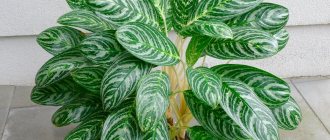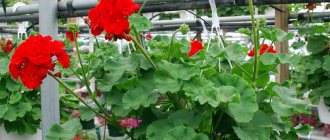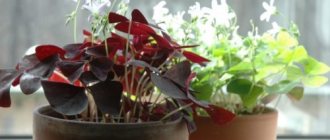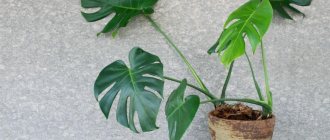Monstera is a deciduous plant from the aroid family, absolutely unpretentious in maintenance. If you care for it correctly, it becomes a real decoration of the house and reaches a height of 3-4 meters. However, its owners often encounter problems in growing it, which can be easily overcome with certain knowledge.
Leaves begin to turn yellow
This happens with insufficient nutrition. Store-bought fertilizers will help get rid of this problem.
Yellowing may also indicate excessive soil moisture. Under these circumstances, stop watering for a while until the plant recovers.
Other similar lesions of Monstera occur due to diseases such as chlorosis or fusarium. In the first case, iron chelate from a flower shop will help. In the second case, there is no specialized treatment. It is necessary to limit watering, otherwise the plant may die.
Monstera. hi here is my question: why does my monstera have leaves without cuts and how to care for it?
Young monstera leaves are whole, heart-shaped, while those of an adult plant are deeply dissected. The appearance of leaves with a single blade on an adult monstera indicates that the plant is experiencing a lack of light or nutrients (or both). Although Monstera is considered a shade-tolerant plant, it grows better in a bright place (without direct sunlight). Move the monstera closer to the window. If necessary, in the spring, carefully transplant the monstera into suitable fresh soil. In March, you can start feeding it regularly until the end of August, applying low concentration fertilizer twice a month.
Caring for a monstera is to create conditions for the plant that are close to its natural living conditions. The temperature should be above +16 degrees Celsius. If the temperature is lower, the monstera stops growing. In winter, it is advisable not to allow the temperature to drop below +12 degrees. In this case, it is necessary to maintain a balance between humidity and temperature. In winter, if the temperature is low, watering should be reduced, but the soil should not be allowed to dry out; it should be kept moist. When the temperature rises, when the monstera grows, watering should be plentiful, but the soil should dry out between waterings. For the Monstera plant, care also includes spraying and washing the leaves with warm water. To make the leaves shine better, add a little milk to the washing water. Monstera does not tolerate direct sunlight, but this does not mean that it can be placed in a dark corner. If there is insufficient lighting, the plant stops growing, the leaves become smaller, lose color, and correct symmetrical slits do not form on them. For normal growth and development, Monstera needs bright, diffused light or partial shade. We must not forget about aerial roots, which do not need to be removed. In order for the plant to receive more nutrients and moisture, they try to direct the aerial roots towards the ground, and in addition they use additional support in the form of a tube rolled up from a plastic mesh with moss or peat, which is kept moist all the time. Such an artificial wet trunk prevents the aerial roots from drying out and creates the necessary moisture for the entire plant. In rooms with central heating and very dry air, the plant must be sprayed. Monstera is a large flower. He needs a fairly large pot (30cm in diameter). The bottom of the pot definitely needs drainage. The soil consists of equal parts of compost soil, sand and peat. Monstera is replanted every two years. As it grows, a larger pot is needed. Monstera. Plant care. »
How many leaves does your monstera have? The cuts appear on the fifth, sixth sheets and then on all subsequent ones.
Probably because she is still young. Young monsteras have leaves without cuts. Monsteras are unpretentious and quite easy to grow. It should be protected from direct sunlight, it likes high humidity, it is advisable to spray the leaves. Read more about care here.
Perhaps she is just still young, they have about 5 new leaves growing without cuts. It’s easy to care for, watering regularly. I also advise putting the aerial roots in jars of water, they will grow by leaps and bounds) and propagate by simple cuttings of 1 leaf with a piece of stem. Just put them in water and plant them as soon as the roots appear. We have these monsters like the weeds have already multiplied..)
she is probably still young, will appear on leaves 5-7, or she does not have enough light
maybe I need to cut it...?
If there is insufficient lighting, too low an air temperature, lack of moisture or nutrition, monstera leaves grow whole, without slits. On the north side, in the depths of dimly lit rooms, it is impossible to obtain large, heavily dissected leaves from the monstera. In such plants, the leaf blade can always remain intact. Although, we must remember that there are species of monstera whose leaves are almost always whole, pointed Monstera (Monstera acuminata, another name for Karvinsky’s monstera), for example
Rare holes in its leaves appear when the stem becomes more than 3 m long, on a vertical support
Monstera has different names. Monstera Oblique.
Problems and difficulties encountered when growing monstera
The reason is the soil is too wet. Let the soil dry out and increase the intervals between waterings.
The cause is stem rot. Typically, this disease manifests itself in winter, when conditions of excess moisture and low temperatures create favorable conditions for the growth of the fungus. Repot the plant in another pot, raise the room temperature and limit watering.
If a lot of leaves have turned yellow, which also rot and wither, then the most likely reason is waterlogging of the soil. If there are no signs of rotting or wilting, then a possible reason is lack of nutrition. If only the lower leaves turn yellow, pay attention to whether there are brown spots on them and what the new leaves look like - if they are small and dark, then this is a sign of lack of moisture. Pale leaves with yellow spots indicate excess sunlight.
The lower leaves always fall off as they age. If several leaves suddenly die off at once, the cause may be a serious error in care. Check the condition of the upper leaves. If the leaves become dry and brown before falling, the reason is that the air temperature is too high. This is a common problem in winter when plants are placed too close to radiators.
The trunk is bare below, small pale leaves.
The reason is that the plant does not have enough light. Monstera does not grow in deep shade.
Brown spots on the underside of the leaf.
The cause is the red spider mite.
Brown, papery tips of lobes and edges of leaves.
The reason is dry air. Spray the leaves or place the pot in damp peat. Similar symptoms may appear if the potty is too tight. Brown tops are an indicator of waterlogging of the soil, but in this case the leaves also turn yellow.
There is no amateur gardener who has not at some point dreamed of growing a luxurious monstera. Another question is that not everyone can afford this for reasons of further placement of an adult plant, because the climbing stem exceeds 6 m, and the diameter of the leaf blade reaches 60 – 100 cm.
A favorite of designers in arranging exquisite bouquets. Charming, unique, beautiful! And this is all about her - the beautiful monster.
Photos for the article were provided by users Beba, Eureka*, Dozhdinka, BEV77, Nattasha.
Monstera species
Borziga
Lives in Mexico. Leaves up to 30 cm long with thin stems. Propagated by seeds. Suitable for growing in an apartment.
Adanson
It lives off the coast of Costa Rica and Brazil in tropical forests. From the liana family, 8-10 m long. Thin leaves with a large number of holes along the entire length. The leaves are ovoid-shaped plates. A short peduncle up to 10 cm and 1-2 cm wide. Flowering is rare.
Delicious or attractive
Habitat: Central America. Prefers the humid tropical climate of mountainous areas. Sometimes found at an altitude of over 1 km. above sea level. A large vine, with leaves up to 60 cm in diameter, heart-shaped, dissected, with holes along this surface. It bears fruit with berries with the smell and taste of pineapple. The middle of the fruit is suitable for consumption. At home it is hardy and not whimsical. In summer, inflorescences-cobs appear, wrapped in yellowish leaves.
Oblique
Found in the tropical forests of Brazil, the Amazon and Guiana regions. A climbing vine with egg-like leaves (lanceolate) dermal to the touch. Length 20 and width 5-6 cm. A light vein runs along the leaf. There are oval-shaped holes all over the surface. Short petiole 10-12 cm long. Inflorescence on a short peduncle.
Leaky or pierced
Lives in the tropics of America. A large vine with lanceolate leaves up to 1 m long and 25 cm wide, uneven in shape, narrowing towards the top, with holes all over the surface.
Pests
In addition to diseases caused by fungus and insufficient care, monstera can often be attacked by insect pests.
Ivy scale
This pest spreads with great speed on the shoots, adventitious roots and leaves of Monstera. Very often, the scale insect hides on the inner surface of the leaf and looks like a brown plaque that is firmly pressed against the leaf.
Signs of a plant being affected by scale insects are: depressed appearance, loss of decorative qualities, yellowness and loss of leaves. Also, the detection of a sooty fungus that appears on the honeydew produced by the parasite will tell you about the scale insect pests. To eliminate it, wipe the sheet with a cotton pad or a piece of soft cloth soaked in soapy water. Increased humidity with a simultaneous decrease in temperature will help as accompanying factors
With a high degree of damage, it is almost impossible to fight this parasite. You can try removing the affected areas and treating the plant with a systemic insecticide.
Spider mite
This insect mainly lives on the underside of the monstera leaf blade. The harm it causes is the appearance of cobwebs, which dry out the leaf. The presence of spider mites can also be indicated by pale green dots on the leaves, gradually merging into a large spot. Affected leaves turn pale green and then die.
In order to overcome spider mites, Fitoverm is widely used, and to prevent its appearance , the plant should be regularly sprayed with water and kept in a room with humid air.
The opinions of plant care specialists always boil down to the fact that it is easier to carry out preventive measures than to subsequently fight parasites.
Infusions of onion peels, garlic, tobacco dust, and soap solution are used as folk remedies for the control and prevention of spider mites It is allowed to infuse and use all these means at the same time. To create an infusion, dissolve a tablespoon of the product in a three-liter jar of water and leave for two days.
It is better to use laundry or tar soap, first grating it on a coarse grater and softening it with water. The resulting infusion is diluted 2-3 times with water, filtered and sprayed on the plant.
How to transplant a monstera
The fast-growing monstera depletes the soil within a year, so every spring - in March-April it is necessary to replant. Monsteras older than four to five years are replanted after 2-3 years, but the top layer of soil is changed annually. Although in general the frequency of transplants depends on the size of the bush.
Large, ceiling-sized Monstera deliciosa are grown in tubs or garden flowerpots; it is almost impossible to replant them painlessly, so it is correct to change the top layer of soil every year - loosen and remove all the soil that is easily yielded (not entangled in roots), and fertilize throughout the growing season. But if the vine shows all the signs of acute nutritional deficiency, it must be completely replanted, possibly with partial rejuvenation of the bush. The fact is that with age, plants older than 10-15 years develop a huge number of aerial roots, the stem wriggles, and the number of leaves is small - they die off as a result of natural aging, so the bush looks like a monster: a tangle of branches, lashes, roots, and 5 -7 leaves.
In this case, you need to cut off the entire above-ground part, disassemble it into petioles - leave a piece of stem and root for each leaf, and immediately plant it in fresh soil in the same pot (pot, tub).
Soil for monstera
- 2 parts turf soil, 1 part peat soil, 1 part humus soil, 1 part small river pebbles, 1 part pine bark (pieces 10-15 mm)
- 2 parts turf soil, 1 part leaf humus, 1 part humus, 1 part vermiculite, 1 part coconut fiber (substrate)
- 2 parts store soil (soil for palm trees, philodendrons, ficus), 1 part humus, 1 part fine gravel (or vermiculite), 1 part coconut substrate (pine bark)
It is better not to use sand in the mixture - it is too fine and cements the soil; instead of pebbles, you can use granite chips or very fine expanded clay, particle sizes 4-5 mm.
In its pure form, store-bought soil is only suitable for growing young plants no larger than 1 m in size. For larger ones, additives of nutritious soil (humus) and raising agents are needed to add porosity to the substrate.
Pots: Monstera deliciosa is first grown in a pot (the minimum size for cuttings from one leaf is 20 cm), when the plant grows into a pot or container of 5-7 liters. More compact species: monstera oblique and dubious rarely outgrow a 10-liter bucket, but the gourmet one grows over 3 m over the years and for stability it needs to choose a stronger pot (in the store you can find flowerpots for 15-20 liters). In any case, do not use pots that are too large with a large supply - there is a risk of waterlogging (land that is not reclaimed by roots takes a long time to dry out, and the organic matter in it rots).
Monstera pests.
With good care, Monstera rarely suffers from pests and diseases, but can be affected by scale insects, thrips, spider mites and scale insects .
Monstera - diseases and pests.
Of the scale insects, the monstera is most often damaged by the ivy scale insect . It settles on leaves, creeping shoots, and adventitious roots. Affected plants look depressed, lose their decorative properties, monstera leaves turn yellow and fall off. Sooty fungus settles on the honeydew secreted by scale insects .
Control measures : wipe the monstera leaves with a cloth or cotton swab dipped in soapy water. Increase humidity and reduce air temperature. In case of severe infection, treat the Monstera with Rogor solution (0.2%), but at this stage it is already difficult or impossible to fight the scale insect. If this does not help, prune the affected parts of the plant.
Spider mites live on the underside of leaves, entwining them with a thin web. The affected monstera leaves dry out and the plant loses its attractiveness.
Control measures: regularly ventilate the room, humidify the air and spray the monstera with water at room temperature. In case of severe infection, treat with Actellik (15 drops per 1 liter of water). Inspect the plant periodically.










